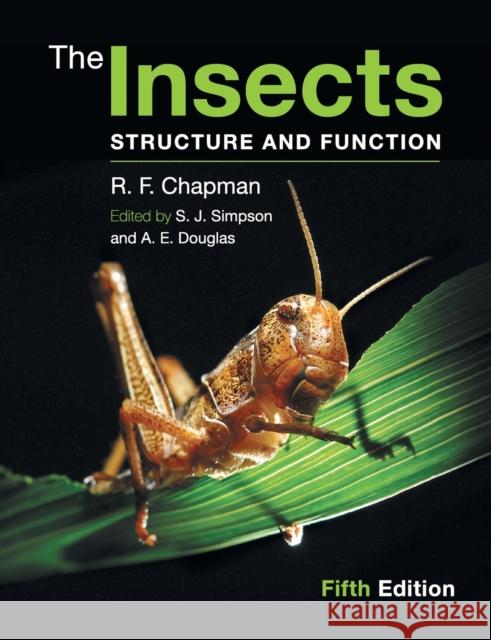The Insects » książka



(netto: 365,91 VAT: 5%)
Najniższa cena z 30 dni: 277,00
ok. 16-18 dni roboczych
Dostawa w 2026 r.
Darmowa dostawa!
A long-awaited update of the standard textbook on insect structure and function, revised by a team of eminent insect physiologists.
'If you want to understand how the natural world works, you need to know about insects - the most successful and important multi-cellular organisms on our planet. The key to that understanding is now in your hands. Extensively revised and updated, this is a quite extraordinary book and effectively summarises everything you need to know about insects. Authoritative yet accessible, The Insects: Structure and Function is the clearest and most comprehensive guide ever written on the workings of insects.' George McGavin, University Museum of Natural History and Oxford University
List of contributors; Preface; Acknowledgments; Prologue George C. McGavin; Part I. The Head, Ingestion, Utilization and Distribution of Food: 1. Head Stephen J. Simpson; 2. Mouthparts and feeding Stephen J. Simpson; 3. Alimentary canal, digestion and absorption Angela E. Douglas; 4. Nutrition Angela E. Douglas and Stephen J. Simpson; 5. Circulatory system, blood and the immune system Angela E. Douglas and Michael T. Siva-Jothy; 6. Fat body Deborah K. Hoshizaki, Allen G. Gibbs and Nichole D. Bond; Part II. The Thorax and Locomotion: 7. Thorax Graham K. Taylor; 8. Legs and locomotion Graham K. Taylor; 9. Wings and flight Graham K. Taylor; 10. Muscles John C. Sparrow; Part III. The Abdomen, Reproduction and Development: 11. Abdomen Leigh W. Simmons; 12. Reproductive system: male Leigh W. Simmons; 13. Reproductive system: female Leigh W. Simmons; 14. The egg and embryology Michael R. Strand; 15. Postembryonic development Stuart Reynolds; Part IV. The Integument, Gas Exchange and Homeostasis: 16. Integument Hans Merzendorfer; 17. Gaseous exchange Jon F. Harrison and Lutz Thilo Wasserthal; 18. Excretion and salt and water regulation Julian Dow; 19. Thermal relations John S. Terblanche; Part V. Communication; Section 1. Physiological Co-ordination within the Insect: 20. Nervous system Stephen Rogers; 21. Endocrine system Stuart Reynolds; Section 2. Perception of the Environment: 22. Vision Michael F. Land and Lars Chittka; 23. Mechanoreception Tom Matheson; 24. Chemoreception Bronwen Cribb and David Merritt; Section 3. Communication with Other Organisms: 25. Visual signals: colour and light production Peter Vukusic and Lars Chittka; 26. Mechanical communication: producing sound and substrate vibrations Ralf Heinrich; 27. Chemical communication: pheromones and chemicals with interspecific significance Jeremy McNeil and Jocelyn G. Millar; Index.
Chapman, R. F.
R. F. Chapman (1930-2003) was an eminent insect physiologist and Professor in the Division of Neurobiology at the University of Arizona. His first four editions of The Insects have formed the standard text in the field for more than forty years.
Simpson, Stephen J.
Stephen J. Simpson is ARC Laureate Fellow in the School of Biological Sciences and Academic Director of the Perkins Centre for the study of obesity, diabetes and cardiovascular disease at the University of Sydney. His core research aims are to understand swarming in locusts and to devise a new framework for studying nutrition. In 2012 he was awarded the Wigglesworth Medal from the Royal Entomological Society of London.
Douglas, Angela E.
Angela E. Douglas is Daljit S. and Elaine Sarkaria Professor of Insect Physiology and Toxicology at Cornell University, New York. Her research and teaching is motivated by the mechanisms underlying insect function and her core research interests are the overlapping topics of insect nutrition and interactions between insects and beneficial microorganisms. She is a Fellow of the Royal Entomological Society and the Entomological Society of America.
1997-2025 DolnySlask.com Agencja Internetowa
KrainaKsiazek.PL - Księgarnia Internetowa









